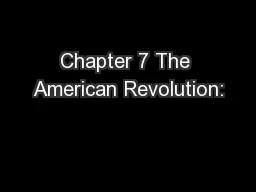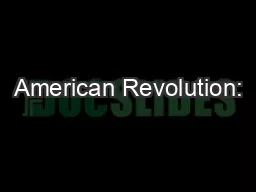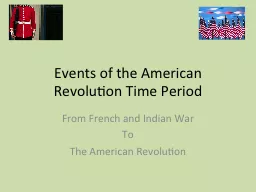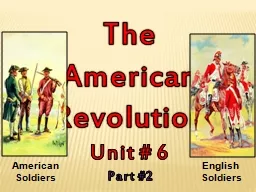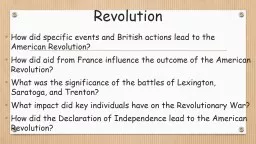PPT-Chapter 7 The American Revolution:
Author : kittie-lecroy | Published Date : 2018-10-24
1775 1783 The Early Years of the War American were divided when it came to the war 20 to 30 percent of Americans were Loyalists 40 to 45 percent were Patriots and
Presentation Embed Code
Download Presentation
Download Presentation The PPT/PDF document "Chapter 7 The American Revolution:" is the property of its rightful owner. Permission is granted to download and print the materials on this website for personal, non-commercial use only, and to display it on your personal computer provided you do not modify the materials and that you retain all copyright notices contained in the materials. By downloading content from our website, you accept the terms of this agreement.
Chapter 7 The American Revolution:: Transcript
Download Rules Of Document
"Chapter 7 The American Revolution:"The content belongs to its owner. You may download and print it for personal use, without modification, and keep all copyright notices. By downloading, you agree to these terms.
Related Documents

